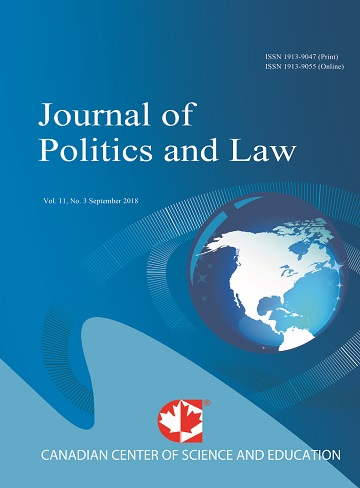Future Studies of Virtual State Formation in Iran and Its Effect on the Promotion of Global Peace Index (the Outlook of 1404)
- Mandana Sajjadi
Abstract
In this study, it has been attempted to investigate the feasible and desirable futures regarding the possibility of virtualization of Islamic Republic of Iran’s state and its effect on the promotion of Global Peace Index (GPI) using trend analysis technique, Delphi surveys and scenario building .Therefore, according to the documents such as perspective and development documents, the outlook of 1404 SH has been considered as a time period of desirable future formation. The writer believes that the formation of virtual state in Iran through decreasing structural violence in society leads to the promotion of GPI. In fact, the dynamics of new global arrangements that have been derived from the technological innovations and socioeconomic adjustments of international relations actors with agencies and global markets, have led to the formation of a new pattern for the conceptualization of states’s evolving nature, that in turn, can increase the possibility of positive peace elements through decreasing the level of structural violence in society. In order to confirm this assumption, seven key deriving forces of virtual states have been chosen referring the systematic theory of virtual state by Richard rosecranace and combining it with Galtung’s positive peace theory and their evolution has been investigated since writing the outlook documents. On the next step, four main scenarios were formed in response to the probability of virtual state formation around two axes of states’ commitments to pursue open economic policies and sanctions lifting as two independent variables. Finally, all four scenarios were evaluated using Delphi surveys of elites and one scenario was chosen as the probable future.- Full Text:
 PDF
PDF
- DOI:10.5539/jpl.v9n2p200
Journal Metrics
h-index (2017): 14
i10-index (2017): 39
h5-index (2017): 9
h5-median (2017): 11
Index
- Academic Journals Database
- ACNP
- ANVUR (Italian National Agency for the Evaluation of Universities and Research Institutes)
- Berkeley Library
- CNKI Scholar
- COPAC
- CrossRef
- DTU Library
- EBSCOhost
- Elektronische Zeitschriftenbibliothek (EZB)
- EuroPub Database
- Excellence in Research for Australia (ERA)
- Genamics JournalSeek
- GETIT@YALE (Yale University Library)
- Ghent University Library
- Google Scholar
- Harvard Library
- HeinOnline
- INDEX ISLAMICUS
- Infotrieve
- Jisc Library Hub Discover
- JournalGuide
- JournalTOCs
- LOCKSS
- MIAR
- Mir@bel
- NewJour
- Norwegian Centre for Research Data (NSD)
- Open J-Gate
- PKP Open Archives Harvester
- Publons
- Pubmed journal list
- RePEc
- ROAD
- Scilit
- SHERPA/RoMEO
- Standard Periodical Directory
- Stanford Libraries
- UCR Library
- Ulrich's
- UniCat
- Universe Digital Library
- UoS Library
- WorldCat
- Zeitschriften Daten Bank (ZDB)
Contact
- William TaiEditorial Assistant
- jpl@ccsenet.org
